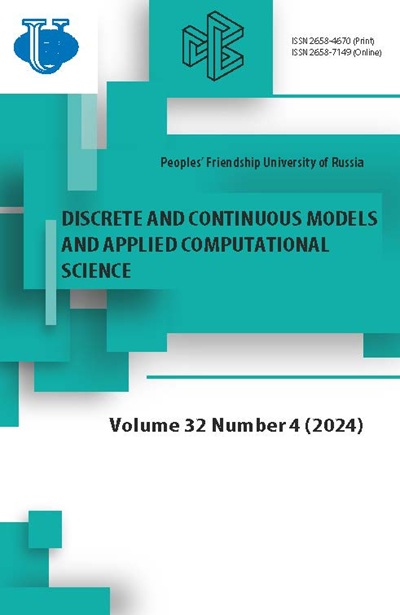Full Text
1. Introduction The problem of summing a functional series in elementary functions naturally arises when solving problems in mathematical physics [
1-6]. If desired, even d’Alembert’s method of solving the wave equation can be considered as a method of summing a Fourier series [
7,
8]. Frequently, results on summation in the final form arose as surprising side effects, for example, when accelerating the convergence of series by A.N. Krylov’s method [
9-12]. However, the authors of the past avoided considering divergent series, the summation of which, as it seemed then, could yield anything [13, p. 641], [14, Ch. 12, Sect. 4]. With the advent of the theory of generalized functions [
15], a reliable basis for considering divergent functional series arose. The surprising fact is that divergent series are usually summed up in a finite form much more easily than convergent ones, and, moreover, the summation of convergent series in a finite form is conveniently reduced to the summation of divergent series. In this paper we illustrate this statement using the example of one-dimensional Fourier series. The possibility of interpreting Krylov’s method in terms of generalized functions was mentioned in [16, p. 32]. 2. Statement of the Problem Definition 1. A periodic function is called piecewise elementary if its period can be divided into a finite number of segments, on each of which an elementary expression in the Liouville sense can be specified for it. We understand the equality between the sum of a Fourier series and a piecewise elementary function in the weak sense [
15], which allows a further uniform consideration of the series summation in elementary functions separate from the issue of its pointwise convergence. Definition 2. The Fourier series
About the authors
RUDN University; Joint Institute for Nuclear Research
Email: malykh_md@pfur.ru
ORCID iD: 0000-0001-6541-6603
Scopus Author ID: 6602318510
ResearcherId: P-8123-2016
Doctor of Physical and Mathematical Sciences, Head of the department of Mathematical Modeling and Artificial Intelligence of RUDN University, research fellow of MLIT JINR
6 Miklukho-Maklaya St, Moscow, 117198, Russian Federation; 6 Joliot-Curie St, Dubna, 141980, Russian Federation
RUDN University; Lomonosov Moscow State University
Author for correspondence.
Email: kmalyshev08102@mail.ru
ORCID iD: 0000-0001-8823-9136
Scopus Author ID: 57221615001
PhD student of the chair of Mathematical Modeling and Artificial Intelligence of RUDN University, engineer of Skobeltsyn Institute of Nuclear Physics, Lomonosov Moscow State University
6 Miklukho-Maklaya St, Moscow, 117198, Russian Federation; 1(2) Leninskie Gory, Moscow, 119991, Russian Federation

















